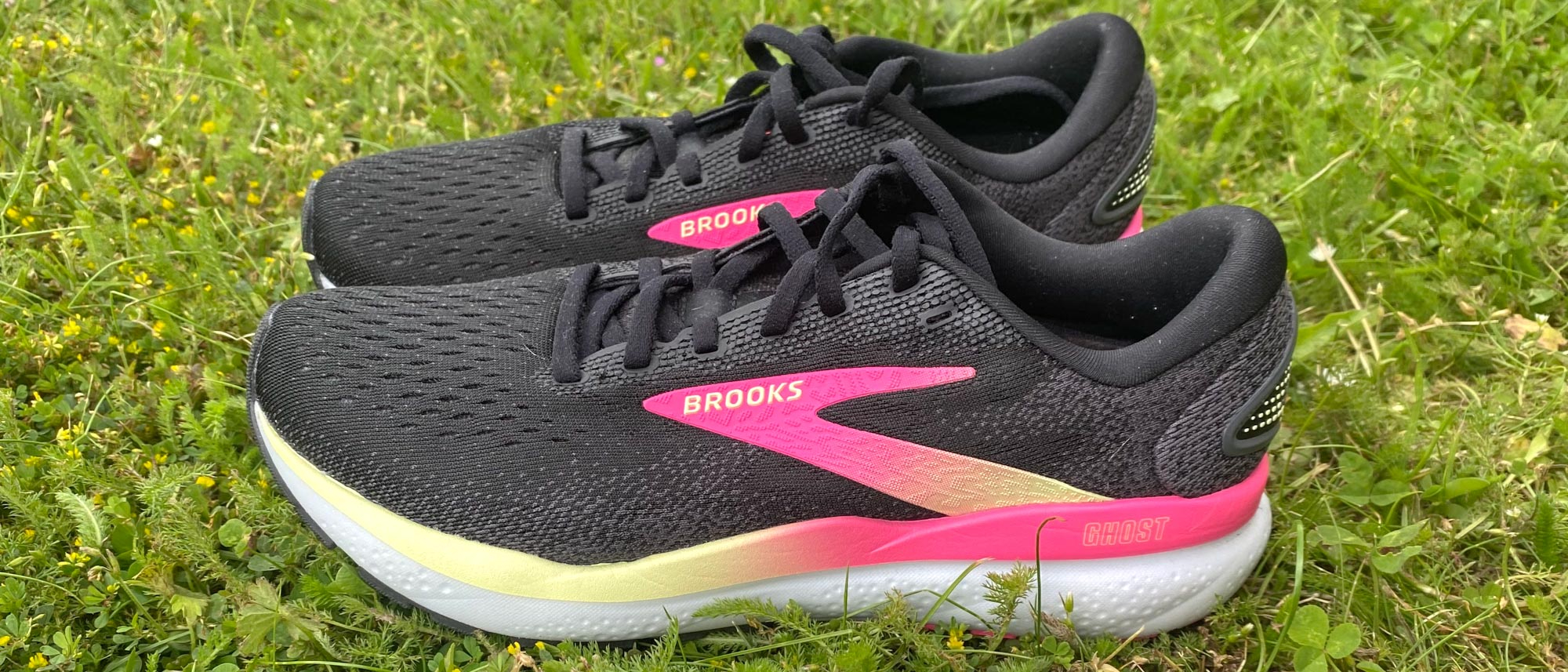Tom's Guide Verdict
The Brooks Ghost 16 is the first version of the Ghost to feature Brooks’ nitrogen-infused DNA Loft v3 midsole foam, and as a result it’s a major upgrade on the Ghost 15. It’s a reliable daily trainer that’s perfect for beginner runners, but we had some problems with the upper and it’s still not the most exciting ride.
Pros
- +
Lighter than Ghost 15
- +
Improved midsole foam
- +
Durable
Cons
- -
Upper not very breathable
- -
Can irritate Achilles
- -
High drop won’t suit everyone
Why you can trust Tom's Guide
The Brooks Ghost is one of the most popular running shoes available, and as a result Brooks rarely makes huge changes to the shoe with new versions. However, the Brooks Ghost 16 is a major update on the Brooks Ghost 15, with an all-new midsole foam made from the DNA Loft v3 material used in the Brooks Glycerin 21.
How have the updates affected the ride of the shoe? To find out if it’s one of the best running shoes available, my Tom’s Guide colleague Jessica Downey and I have racked up the miles in the Brooks Ghost 16, and we think both long-term Ghost fans and those new to the line will enjoy the improved ride of the shoe.
Brooks Ghost 16 review: price and availability
The Brooks Ghost 16 launched in May 2024 and is available from Brooks as well as third-party retailers. It costs $140, which is the same price as the Ghost 15 and $20 cheaper than Brooks’ flagship cushioned shoe, the Glycerin 21. It’s also $10 cheaper than the Brooks Ghost Max, which is another cushioned shoe with a lower heel-to-toe drop than the Ghost 16.
Brooks Ghost 16 review: design
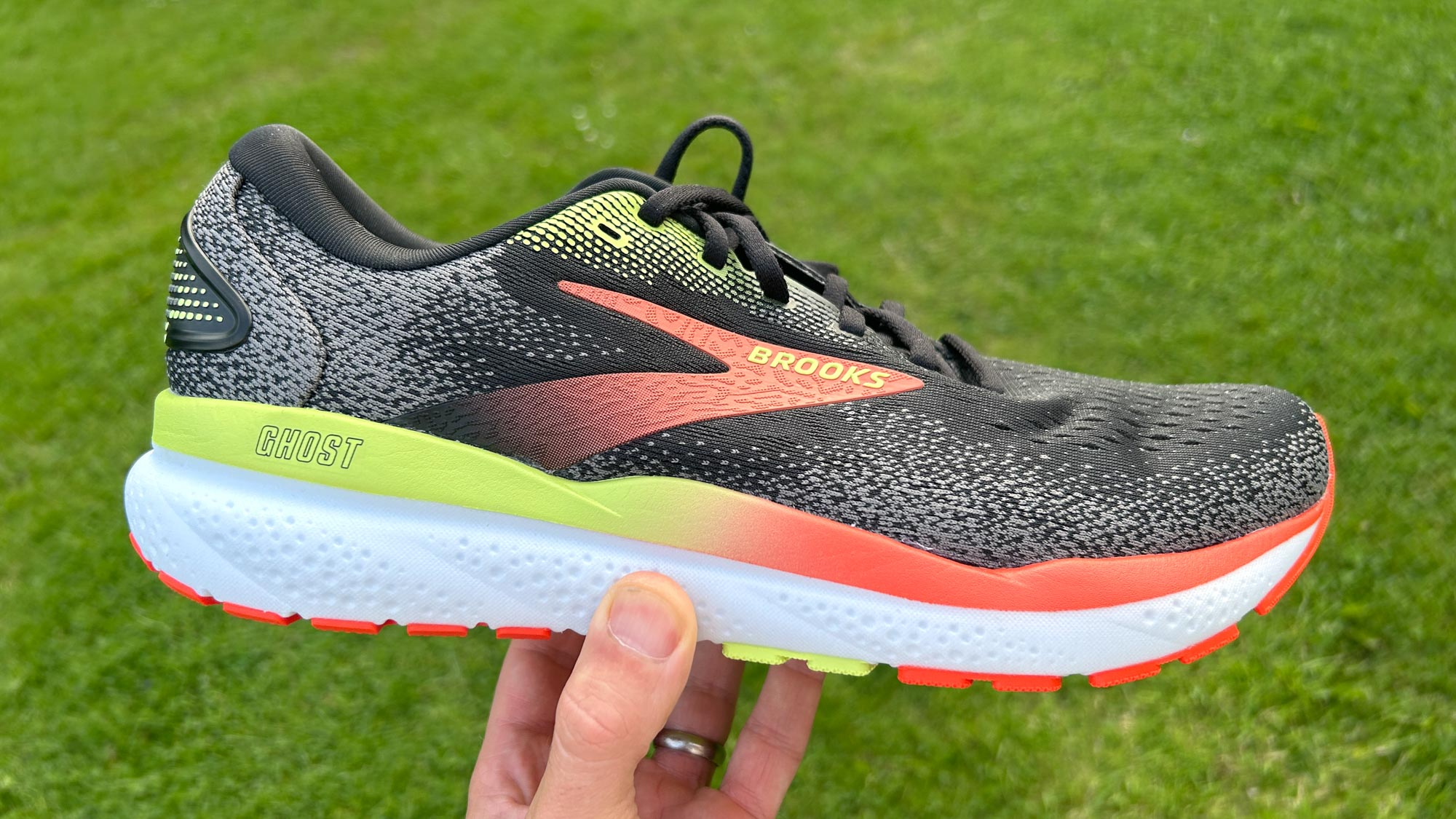
The Brooks Ghost 16 is available in four different widths and comes in 10 colors for the men’s shoe and 11 colors for the women’s. The 12mm heel-to-toe drop is one of the highest you’ll find, with most daily trainers now having an offset of 8-10mm.
Thanks to the new midsole foam, the Ghost 16 is lighter than the Ghost 15. The US size 10 weighs 9.9oz, whereas the Ghost 15 is 10.4oz in the same size.
Upper
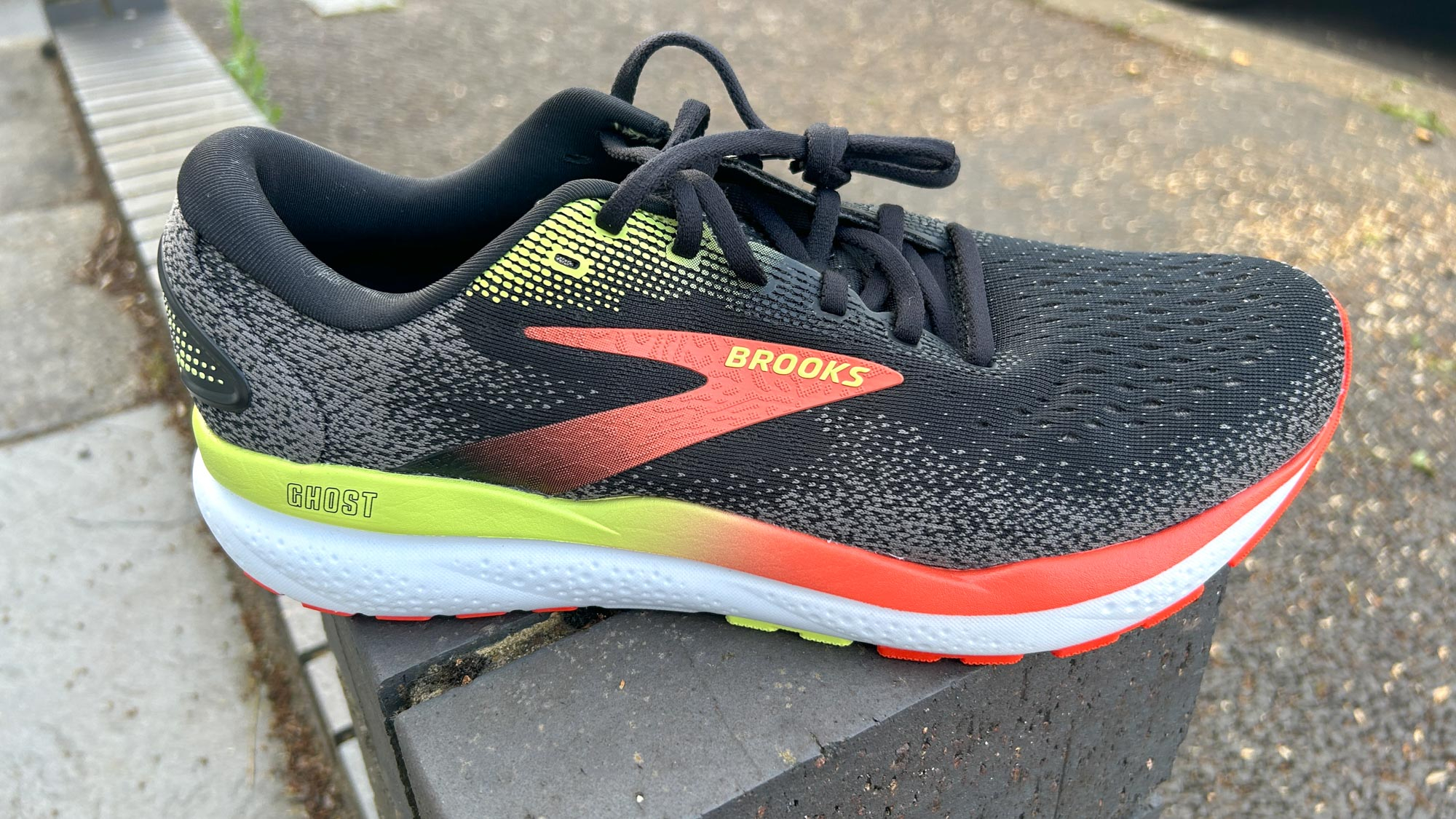
There is a lot of padding around the collar and tongue of the Ghost 16, which uses a fairly thick mesh material for its upper. Comfort is clearly the focus, and the shoe does feel great when you first step into it. There’s also a significant internal heel counter at the back of the shoe which makes it very stiff, which helps with stability.
Midsole
The star feature on the Brooks Ghost 16 is the new DNA Loft v3 foam in the midsole. This is a nitrogen-infused EVA and the same foam that was introduced to the Glycerin line with the Glycerin 20.
It’s a lightweight material that’s livelier than the dull DNA Loft v2 foam used on the Ghost 15. Brooks suggests the new foam is 10% lighter, 9% softer and delivers 10% more energy return than DNA Loft v2.
Outsole
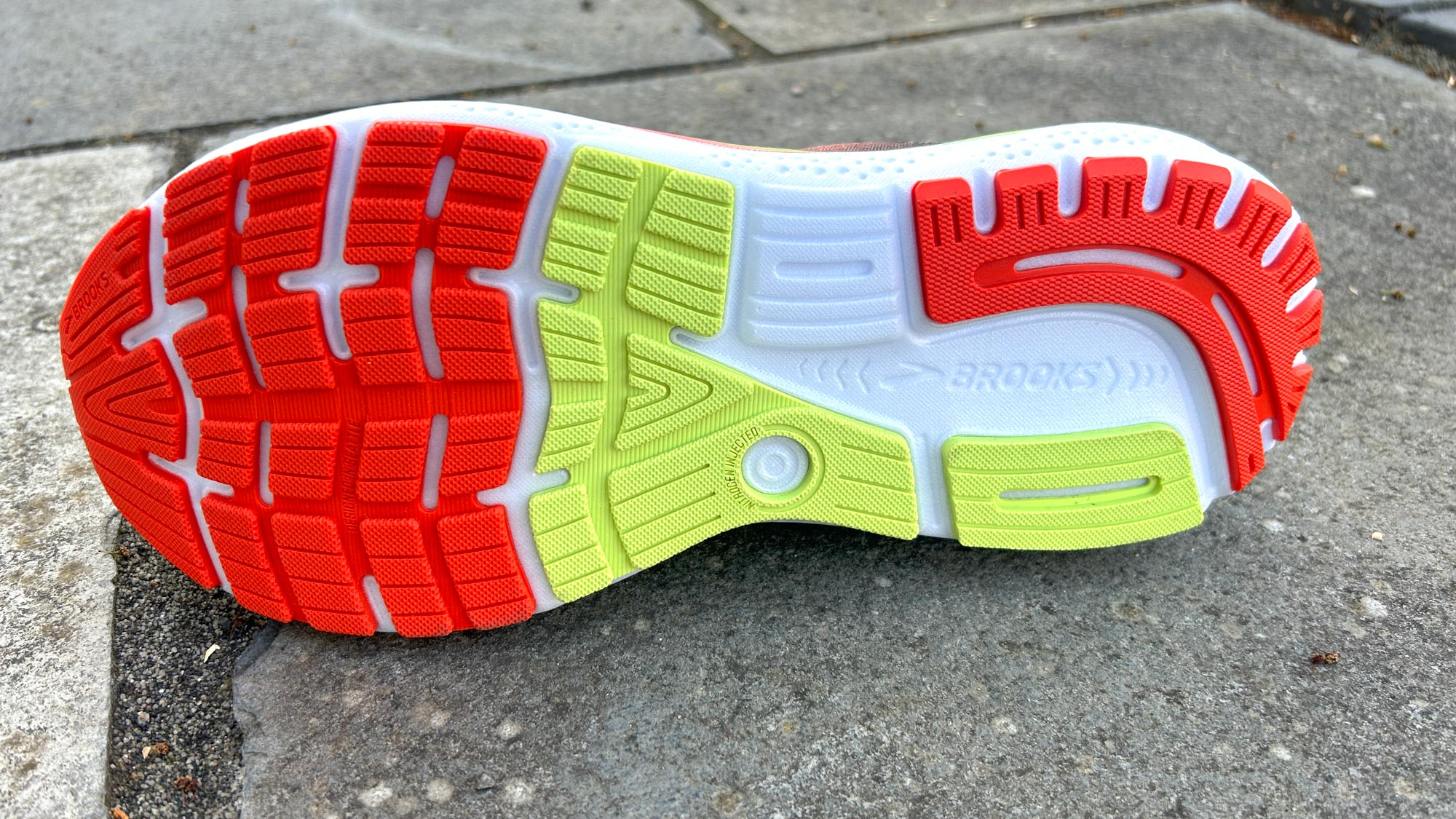
Along with the midsole, Brooks has updated the RoadTack outsole of the shoe, which is made from silica-infused RoadTack rubber. The shoe grips well on wet pavements and the outsole is showing no signs of wear and tear after 50 miles.
Brooks Ghost 16 review: fit
Nick Harris-Fry (NHF): I found that the Ghost 16 fit me well for length in my normal running shoe size, the same size I’ve had with all past versions of the shoe I’ve tested.
However, the stiff heel counter and excessive padding at the back of the shoe did irritate my Achilles tendon, especially on longer runs. The upper is also quite thick in general, and I found it wasn’t very breathable on hot days.
Jessica Downey (JD): The Ghost 16 fit perfectly for me in my usual running shoe size and my first impression trying them on was that overall I liked the feel of the shoe on my feet.
I found the toe box to be a good amount of room, but I have pretty narrow feet, so if you have broader feet you should consider opting for the wide fit option. I liked the padding around the ankle collar and in the tongue, but have to agree with Nick on the lack of breathability in the shoe's upper.
Brooks Ghost 16 review: running performance
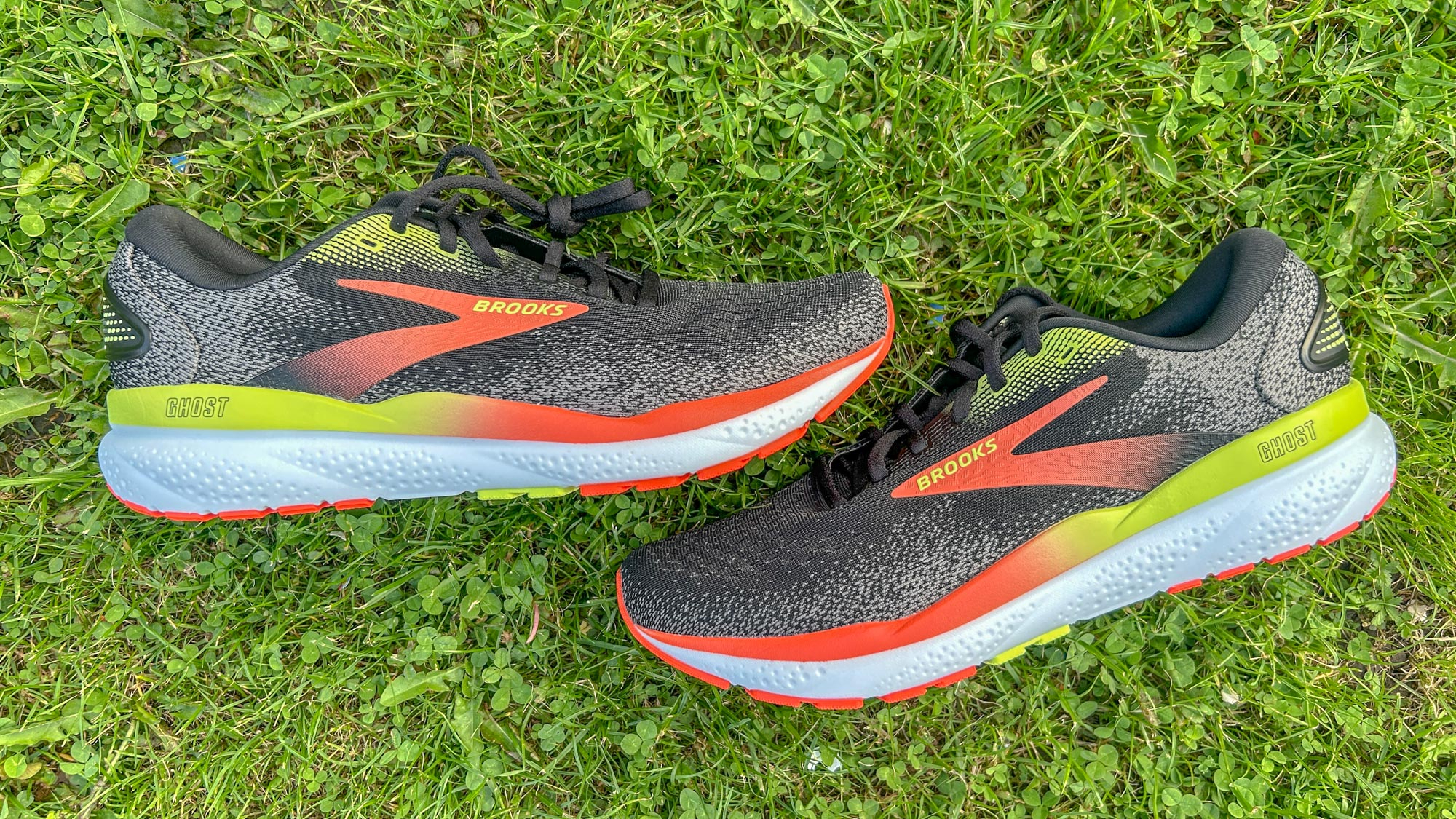
JD: I haven’t tested past editions of the Brooks Ghost, so I stepped into the Ghost 16 with zero preconceptions. I ran a total of 30 miles wearing the shoe, getting a feel for the shoe in my easy miles and during some speedwork.
First off, I liked that it didn’t feel like the shoe needed to be broken in to feel the real benefit of the cushioning, something I have noticed while testing other running shoes recently like the Saucony Guide 17.
On the roads, I found the DNA Loft v3 struck a good balance between soft and responsive. I noticed the shoe felt soft and forgiving underfoot, but it also felt stable which we have the thick rubber outsole to thank for this.
Speaking of the outsole, I was impressed by the grip on the Ghost 16. I took them out for a tempo run after a night of rain and after the warmup, I quickly felt confident enough to pick up the pace and to turn tighter corners on the wet roads without risking a slip or fall in the shoes.
During testing, I found I had two qualms with the Brooks Ghost 16. One being, that the temperature inside the shoe increased with every mile while wearing the shoe and I found this to be quite uncomfortable on hotter days.
The second quibble is that I quite like to have a bit of a rocker in my running shoe to propel me forward, and I didn’t feel like the Ghost 16 delivered on this for me. However, I did feel overall the shoe provided a smooth ride.
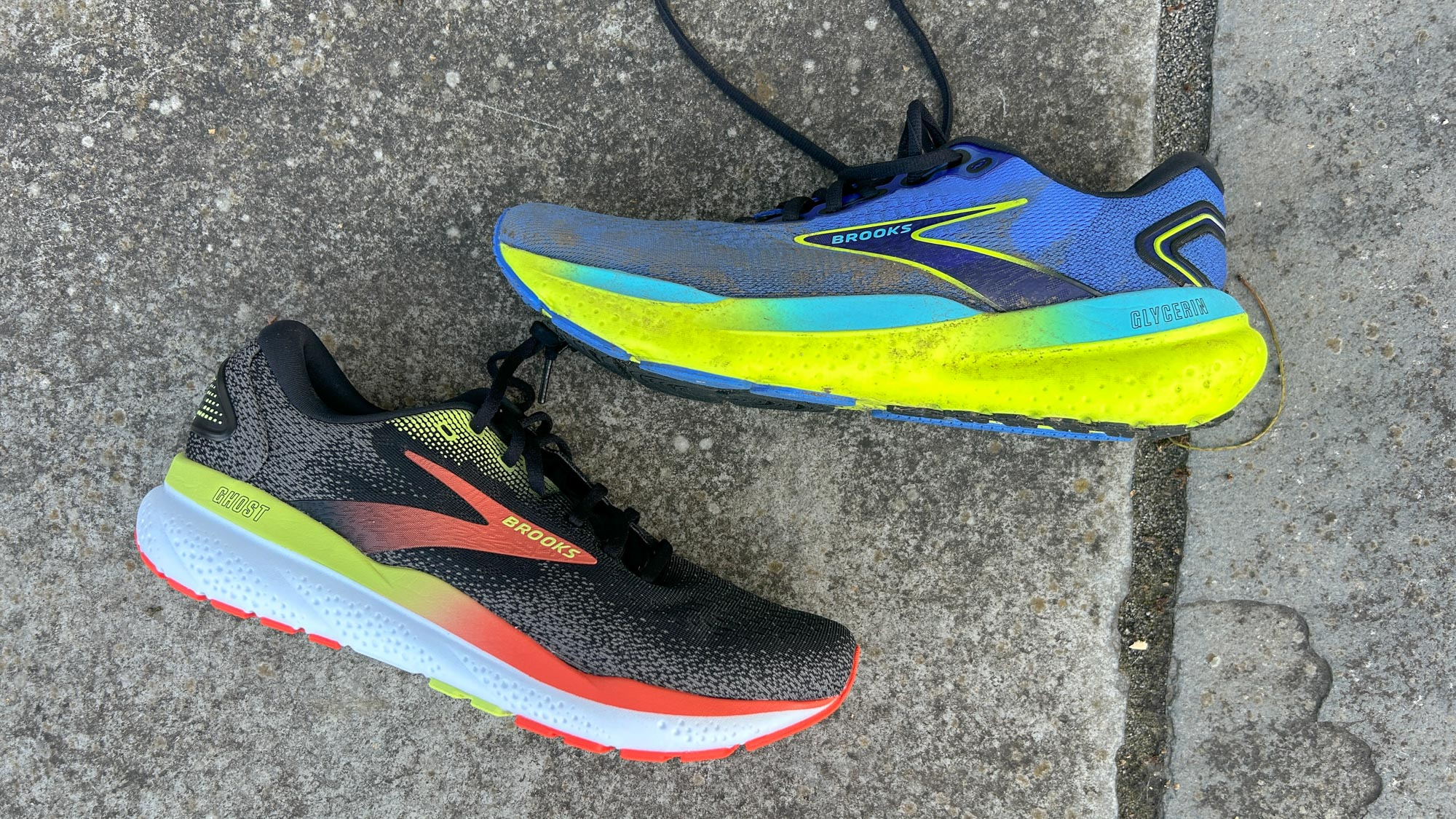
NHF: I have tested several past editions of the Brooks Ghost and the Ghost 16 is by far my favorite version yet. I am a big fan of the Glycerin 21 and Glycerin 20, which both use the DNA Loft v3 foam, so I was pleased to see it introduced to the Ghost line — even if Brooks could and probably should have done so with the Ghost 15.
I’ve run 50 miles in the shoe and the ride is very consistent. It’s not a particularly springy or soft shoe, but it is comfortable enough for long runs, and the foam is resilient, so it feels exactly the same at the end of a 13-mile run as it did at the start. That’s in contrast to some shoes with softer foams that can feel great at mile one but harden up by the end of a long run.
It’s not the lightest shoe, but the foam is quite responsive for faster runs, and the Ghost 16 is a fairly versatile option, even if I’d prefer a lighter daily trainer like the Hoka Mach 6 or New Balance Rebel v4 for speedy runs myself.
With past models of the Ghost I found the high drop of the shoe created a ride where my forefoot would slap down, which became uncomfortable after a while. I had no such problems with the Ghost 16, which has a smoother feel, though it’s not as smooth as a rockered shoe like the Hoka Clifton 9 or even the Brooks Ghost Max.
Should you buy the Brooks Ghost 16?
JD: While the Ghost 16 isn’t the most exciting running shoe, I think it makes for a solid daily trainer and is an option worth considering if you are just getting into running as it’s a shoe with plenty of protection.
I think if you like the sound of the Brooks Ghost 16 but aren’t sold on the 12mm drop, the Asics Gel Nimbus 25 offers a similar ride experience but has a lower drop of 8mm — it just costs $20 more. And if you’re anything like me and like a little rocker action in your running kicks, I’d suggest checking out the Hoka Clifton 9.
NHF: Aside from the achilles irritation I enjoyed running in the Ghost 16 and if you don’t have any problems with the fit around the heel it’s a good daily training option. The mix of comfort and versatility mean that the Ghost 16 would be a good option for new runners in particular — it will protect your body from the impact of running and it’s a bit cheaper than many cushioned shoes, including the Brooks Glycerin 21.
I think existing fans of the Ghost line will enjoy the new shoe, and it could win over some new ones as well. However, there are alternatives I prefer, like the Puma Velocity Nitro 3, which is cheaper and has a livelier, bouncier ride.
I also think the Glycerin 21 is a bit more comfortable and enjoyable to run in, so might be worth the $20 extra, and if you want a softer shoe then the New Balance 1080v13 would fit the bill.
If you’d prefer a lower-drop daily trainer, both the Hoka Clifton 9 and Brooks Ghost Max are great options with a rockered profile that moves you onto your toes smoothly.

Nick Harris-Fry is an experienced health and fitness journalist, writing professionally since 2012. He spent nine years working on the Coach magazine and website before moving to the fitness team at Tom’s Guide in 2024. Nick is a keen runner and also the founder of YouTube channel The Run Testers, which specialises in reviewing running shoes, watches, headphones and other gear.
Nick ran his first marathon in 2016 after six weeks of training for a magazine feature and subsequently became obsessed with the sport. He now has PBs of 2hr 27min for the marathon and 15min 30sec for 5K, and has run 13 marathons in total, as well as a 50-mile ultramarathon. Nick is also a qualified Run Leader in the UK.
Nick is an established expert in the health and fitness area and along with writing for many publications, including Live Science, Expert Reviews, Wareable, Coach and Get Sweat Go, he has been quoted on The Guardian and The Independent.
